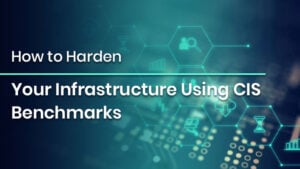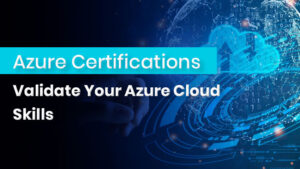Introduction
Terraform is an open-source Infrastructure as Code (IaC) tool developed by HashiCorp. It is used for building, changing, and managing infrastructure resources in a declarative and version-controlled manner. Terraform allows you to define your infrastructure and its dependencies in code, typically using a Domain-Specific Language (DSL) called HashiCorp Configuration Language (HCL). However, JSON and other formats are also supported. This article covers detailed knowledge of Terraform Providers.
Check Out Our DevOps Courses Now!
What is DevOps?
The phrase DevOps is a combination of the development and operations of the term, and it refers to a collaborative or shared approach to the work performed by an organization’s application development and IT operations teams.
DevOps, in its broadest sense, is a mindset that promotes greater communication and collaboration among these teams – and others – inside a business. DevOps, in its most basic form, relates to the deployment and upkeep of programmable infrastructure, automation, and iterative software development. Building trust and cooperation between developers and system administrators and aligning technology projects to business goals are examples of culture shifts. DevOps can transform the software delivery chain, services, job roles, IT tools, and best practices.
What is Infrastructure as Code?
Infrastructure as Code (IaC) manages data centers’ server, storage, and networking infrastructure. In traditional data center infrastructure management, each configuration change necessitates manual intervention from system administrators and operators. With IaC, infrastructure configuration information is stored in standardized files that software can read and monitor the infrastructure’s state. Because it removes human configuration processes, IaC can boost productivity and dependability.
Features of Terraform
Terraform is a powerful tool for automating infrastructure provisioning and management, and it is widely used in DevOps and cloud-native development workflows to achieve infrastructure as code principles. It helps organizations maintain consistent, reproducible, scalable infrastructure across cloud and on-premises environments. Terraform offers a wide range of features, and capabilities, making it a popular choice for Infrastructure as Code (IaC) and infrastructure automation. Here are some of the critical features of Terraform:
- Declarative Syntax: Terraform uses a declarative language (HCL – HashiCorp Configuration Language) to define infrastructure resources. You describe what you want, and Terraform determines how to make it happen. This simplifies the process of defining and managing infrastructure.
- Provider-Based: Terraform supports a wide range of cloud providers (e.g., AWS, Azure, Google Cloud), as well as on-premises and third-party services. Each provider has its own set of resources that you can manage using Terraform.
- Resource Definitions: In your Terraform code, you define resources such as virtual machines, networks, databases, etc. These resources are represented as blocks of code in your Terraform configuration.
- Dependency Management: Terraform automatically manages resource dependencies. It ensures that resources are created and destroyed correctly based on their dependencies.
- State Management: Terraform maintains a state file that tracks the current state of your infrastructure. This state file is used to plan and apply changes to your infrastructure.
- Version Control Integration: Terraform code can be version-controlled using tools like Git, allowing collaboration, code reviews, and version history tracking.
- Modularity: Terraform encourages using modules to encapsulate and reuse infrastructure configurations. Modules are reusable sets of Terraform code that define a specific piece of infrastructure.
- Community and Ecosystem: Terraform has a large and active community, which has created a vast ecosystem of community-contributed modules and plugins, making it easier to manage various infrastructure components.
- Multi-Cloud Support: Terraform supports multiple cloud providers, including AWS, Azure, Google Cloud, and many others. This enables you to manage resources across cloud environments using a consistent tool and configuration language.
- Provider Ecosystem: Terraform has a rich ecosystem of providers, which are plugins that enable you to manage resources from various cloud and service providers. You can extend Terraform’s capabilities by using community-contributed providers or creating custom ones.
- Resource Management: Terraform lets you define and manage various infrastructure resources, including virtual machines, networks, storage, databases, and security groups. You can create, update, and destroy resources as needed.
- Remote Backends: Terraform supports remote backends, which store the state file in a central location (e.g., AWS S3, Azure Blob Storage) to enable collaboration and state locking for concurrent operations.
- Variable Support: Terraform allows you to define variables, which makes it easy to parameterize your configurations. Variables can customize infrastructure configurations for different environments or use cases.
- Graphical Visualization: Terraform can generate graphical visualizations of your infrastructure to help you understand resource relationships and dependencies.
- Scalability: Terraform can manage infrastructure of all sizes, from small projects to large, complex environments with thousands of resources.
Terraform Key Concepts: Plan, Apply and Destroy
Plan, apply, and destroy are the terraform commands. We know that according to the Terraform workflow, we first write code. We review the code by using the Terraform plan command, and we can do any number of iterations between the write and plan phases of our project. Finally, when we are satisfied with the code, we apply that code to the actual infrastructure.
- Terraform plan: The plan command reads the code and then creates and shows a “plan” of deployment. It allows the user to review the action plan before executing anything. You can look at this plan as a team or individually and decide on the final execution. By using the credentials of the platform you are attempting to deploy, Terraform now authenticates itself. It is an important command because, as an individual, you might want to look at the resources your code will deploy. You might want to share your deployment plan with other teams as a team.
- Terraform apply: The terraform apply is the last command to translate your code into the physical infrastructure. It also updates the deployment state tracking mechanism known as “state file.” Terraform Apply creates this state file and is necessary for Terraform to function since later commands will check the state file before making changes to your Terraform infrastructure.
- Terraform destroy: The terraform destroy command looks at the recorded, stored state file created during deployment and destroys all the resources created by your code. Use this command with caution as it is a non-reversible command. It is best to take backups and ensure you want to delete the infrastructure before using this command.
Working of Terraform
Terraform enables you to define, provision, and manage infrastructure resources as code. It follows a declarative approach, meaning you describe what infrastructure you want, and Terraform figures out how to make it happen. Here is an overview of how Terraform works:
- Provider Configuration: In your configuration file, specify the providers you’ll use. Providers are plugins that interface with specific infrastructure platforms or services (e.g., AWS, Azure, Google Cloud). You configure provider settings, such as credentials, regions, and endpoints.
- Resource Definitions: Within your configuration file, you define the infrastructure resources you want to create or manage. Resources can include virtual machines, databases, networks, security groups, and more. You specify the resource type, name, and its configuration attributes.
- Variables: Terraform supports variables, which allow you to parameterize your configurations. Variables can be used to customize your infrastructure for different environments or use cases. You can define variables in separate files or inline in your configuration.
- Modules (Optional): You can organize your configuration into modules for modularity and reusability. Modules are collections of Terraform code that encapsulate specific infrastructure or application configurations. You can use modules within your main configuration to simplify complex setups.
- Dependency Management: Terraform automatically analyzes the resource dependencies based on your configuration. It ensures that resources are created or modified correctly to satisfy these dependencies. You don’t need to specify the order explicitly.
Terraform Providers
Terraform providers are plugins that enable Terraform to interact with various infrastructure and service platforms. Providers are essential components of Terraform, as they define the resources and data sources available for managing and querying the infrastructure of a specific platform or service.
Here are some standard Terraform providers, along with examples of the platforms or services they support:
- AWS Provider: Allows you to manage Amazon Web Services (AWS) resources, such as EC2 instances, S3 buckets, RDS databases, and more.
- Azure Provider: Enables management of resources in Microsoft Azure, including virtual machines, Azure App Service, Azure SQL Database, and more.
- Google Cloud Provider: supports managing Google Cloud resources, including Google Compute Engine instances, Google Cloud Storage buckets, and BigQuery datasets.
- Heroku Provider: Allows you to manage Heroku applications, add-ons, and other resources.
- Docker Provider: Supports managing Docker containers and images.
- Kubernetes Provider: Facilitates management of Kubernetes resources, such as pods, services, and deployments.
- GitHub Provider: Allows you to interact with GitHub repositories and organizations. Example configuration.
- OpenStack Provider: Supports managing resources on OpenStack-based clouds, including virtual machines, networks, and storage.
- Cloudflare Provider: Allows you to configure and manage Cloudflare settings and resources, such as DNS records and SSL certificates.
- Datadog Provider: Terraform partners with Datadog to provide an official provider for configuring Datadog monitoring and observability resources.
- New Relic Provider: The New Relic provider, developed in collaboration with New Relic, enables the management of New Relic monitoring and application performance resources.
Conclusion
Terraform is a versatile and powerful Infrastructure as Code (IaC) tool that simplifies infrastructure resource provisioning, management, and scaling. It offers a declarative approach to defining infrastructure configurations, enabling users to describe the desired state of their infrastructure using code.








